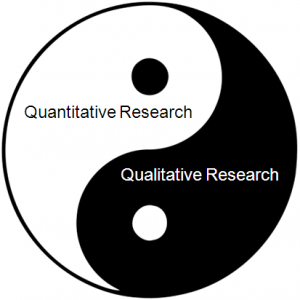When one starts planning to undertake a research project, his/her viewpoint or perspective on the topic is most important. The researcher’s experience in life (not necessarily research experience), skills, associations, strengths and weaknesses matter. A good commencement is to understand the subject matter. The researcher must decide what can be studied, what objectives can be examines and accordingly prepare a research outline. In the academic world and business world the most preferred format of research is mixed method research which uses an inclusive methodology of both qualitative and quantitative research. It involves collecting, analysing and integrating quantitative and qualitative data. This research integration provides a better understanding of the research problem than either using purely qualitative or quantitative research alone.
Research objectives are a critical part of a successful research. They are a set of clearly defined and meaningful objectives. Having well-defined objectives narrows and focuses the research on the topic and ensures that the findings are relevant to decision-makers. The objectives should be presented briefly, they should be presented in logical sequence,
they should be realistic which can be achieved within the expected tim eframe and achieved within the available resources. They should be phrased in operational terms and they should be fixed till end of the research.
eframe and achieved within the available resources. They should be phrased in operational terms and they should be fixed till end of the research.
Qualitative Research: This is primarily exploratory type research. It is used to gain an understanding of basic reasons, opinions, and impetus. It provides insights into the problem or helps to develop ideas or hypotheses for potential quantitative research. In a qualitative research the emphasis is put on the natural setting and the points of views of the research participants. Additionally, special consideration is given to the researcher as person. Qualitative Research is often used to discover trends in thought and opinions, and dive deeper into the problem. Qualitative data collection methods vary using unstructured or semi-structured techniques. Some common methods include focus groups (group discussions), individual interviews, and researcher’s observations. The sample size is usually small, and respondents are selected to fulfil a given questionnaire or schedule.
Quantitative Research: Is used to measure the problem by way of producing numerical data or data that can be transformed into functional statistics. It is used to quantify attitudes, opinions, behaviours, and other defined variables and generalize results from a larger sample population. Quantitative Research uses measurable data to formulate facts and uncover patterns in research. Quantitative data collection methods are much more structured than Qualitative data collection methods. Quantitative data collection methods include various forms of surveys, such as online survey, paper survey, kiosk survey and even mobile survey. It also includes telephonic interviews, face-to-face interviews, longitudinal studies (is a research design that involves repeated observations of the same variables over short or long periods of time) website interceptors, online polls, and systematic observations.
Variables: A variable is defined as anything that has a quantity or quality that varies. The dependent variable is the variable a researcher is interested in. An independent variable is a variable believed to affect the dependent variable. Country, state, gender, age, sex, business income and expenses, country of birth, capital expenditure, class grades, height, health condition, and eye colour and vehicle type are examples of variables.
Mixed Method Research: is done by mixing both quantitative and qualitative research and data, the researcher gains breadth and depth of understanding and confirmation, while offsetting the weaknesses inherent to using each approach by itself. One of the most advantageous characteristics of conducting mixed methods research is the possibility of using several means such as data sources to examine the same phenomenon. This method is also called triangulation. It allows one to identify aspects of a phenomenon more accurately by approaching it from different vantage points using different methods and techniques. Successful triangulation requires careful analysis of the type of information provided by each method, including its strengths and weaknesses.
Advantages of mixed method research: it provides strengths that balance the weaknesses of quantitative and qualitative research. For instance, quantitative research is weak in understanding the perspective or setting in which people behave, something that qualitative research makes up for. On the other hand, qualitative research is seen as incomplete because of the potential for biased interpretations made by the researcher and the difficulty in generalizing findings to a large group. Quantitative research does not have these weaknesses. Thus, by using both types of research, the strengths of each approach can make up for the weaknesses of the other.
Mixed method provides a more complete and comprehensive understanding of the research problem than either quantitative or qualitative approaches alone. It provides an approach for developing better, more context specific instruments. For instance, by using qualitative research it is possible to gather information about a certain topic such as why students fear maths, or changing trends in children’s garment industry in order to develop an mechanism with greater validity and soundness.
Ideally, we should use both qualitative and quantitative research since they provide different perspectives and usually complement each other. There are plenty advanced survey software available in the market; usage of them gives the research team the option to integrate video and chat sessions with surveys, which can give the best of both quantitative and qualitative research. Using this methodological approach is a cost-effective and an alternative to the combination of in-person focus groups and a separate quantitative study.













































